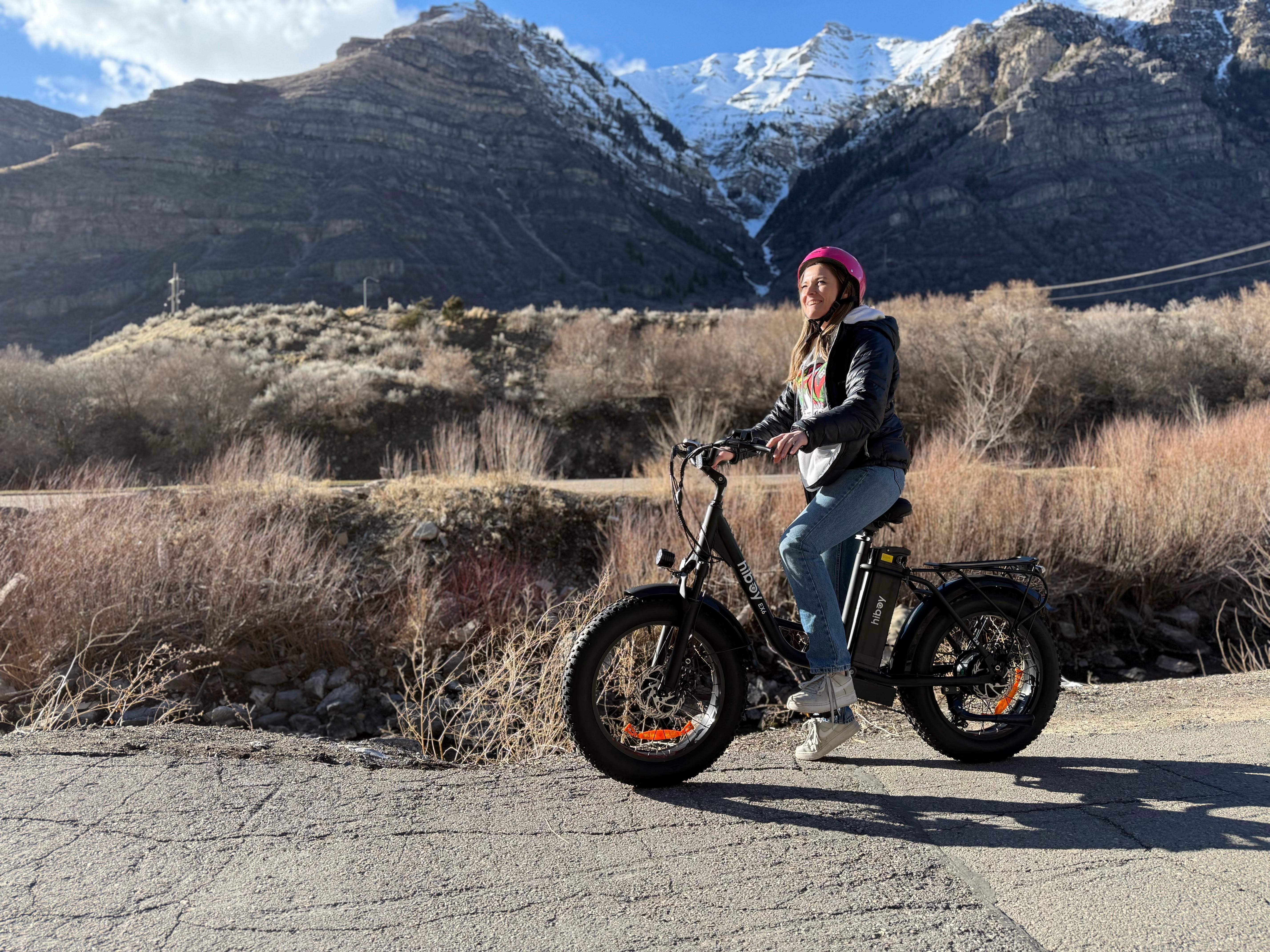Electric bikes offer unmatched convenience and modern mobility - but they also generate heat. When temperatures climb too high inside the battery, motor, or controller, your e-bike may throttle performance or shut down to protect itself.
This guide breaks down why overheating happens, how to prevent it, and how riders, mechanics, and fleet managers can keep their e-bikes running safely all year round.
Why Overheating Matters (and What is at Stake)
Heat can affect your e-bike more than you think. It impacts safety, performance, and long-term durability.
1. Safety
Extreme heat accelerates battery degradation and stresses internal components. While modern batteries include safety systems and protection circuits, high temperatures still increase risk and reduce overall reliability.
2. Performance
Most e-bikes automatically reduce power when overheating - a feature known as thermal throttling. When this happens, you may notice:
- Reduced torque, especially on hills
- Limited PAS (pedal assist) levels
- Weaker throttle response
- Temporary system shutdowns or restarts
3. Component Longevity
High temperature accelerates aging in:
- Battery cells and internal chemistry
- Motor windings and magnets
- Controller MOSFETs and electronics
Typical Safe Temperature Ranges
- Battery discharge: 0-45°C
- Battery charging: below 45°C
- Motor internal temperature: around 90-100°C
- Controller: usually rated around 60-80°C
How E-Bikes Generate Heat
1. Battery Heat
Battery heat mainly comes from internal resistance. The higher the current draw, the more heat is generated. In simple terms:
Higher load = more current = more heat.
Common triggers include:
- Long, steep climbs
- Riding on maximum throttle for extended periods
- Heavy riders or extra cargo
- Low tire pressure
- Off-road riding such as sand, mud, or grass
2. Motor Heat
Motors heat up mainly under high torque demand. Typical scenarios include:
- Slow and steep hill climbs
- Frequent rapid acceleration
- Trail or loose-surface riding
3. Controller Heat
The controller often becomes the hottest component because it regulates current flow. Heat builds quickly during:
- Stop-and-go traffic
- High-speed summer riding
- Delivery routes with constant acceleration
Signs Your E-Bike Is Overheating
- Weak throttle response
- PAS levels feel limited
- Lower top speed than usual
- Motor casing or controller feels unusually hot
- Battery drains faster than normal
- Temporary power cut-offs
Environmental Factors That Increase Overheating Risk
1. Hot Weather
Riding at 28-35°C or higher reduces heat dissipation and increases baseline temperature.
2. Steep or Long Climbs
One of the most common causes of overheating, especially when riding slowly with high torque demand.
3. Trail and Off-Road Conditions
Mud, sand, and grass can increase rolling resistance by 20-40%.
4. Heavy Riders or Cargo
Extra load increases current draw and heat.
5. Stop-and-Go Urban Riding
Frequent acceleration overheats motors and controllers most quickly.
How to Prevent Overheating
1. Moderate Your Climbing Speed
- Too slow: high torque load overheats the motor
- Too fast: high current draw overheats the battery
Use PAS and maintain a steady pace.
2. Limit Full-Throttle Usage
Avoid holding maximum throttle for long periods.
3. Maintain Proper Tire Pressure
Low tire pressure makes the motor work harder.
4. Reduce Unnecessary Weight
Remove items not needed for the trip to reduce load.
5. Take Short Cooling Breaks
A 1-3 minute pause can significantly lower component temperatures.
6. Avoid Charging in Hot Conditions
Charge indoors or in the shade.
How Hiboy E-Bikes Help Prevent Overheating
Hiboy e-bikes include built-in protections such as:
- Battery temperature monitoring
- Smart BMS overcurrent protection
- Controller thermal throttling
You can explore more models with reliable performance on hills and long rides here: Hiboy Electric Bikes Collection
For riders who need strong torque and all-terrain capability, the Hiboy P6 Fat Tire Electric Bike is a popular choice.
For Fleet Owners: Reducing Overheating at Scale
1. Identify High-Load Routes
Map steep areas, traffic-heavy zones, and delivery hotspots.
2. Train Riders
- Avoid PAS 5 unless necessary
- Do not climb at extremely low speeds
- Report early signs of overheating
3. Rotate E-Bikes
Allow bikes to cool before redeployment.
4. Perform Regular Maintenance
- Check tire pressure
- Inspect connectors
- Monitor battery temperature behavior
What to Do if Your E-Bike Overheats
- Stop riding immediately
- Move into a shaded area
- Turn off the bike
- Wait 10-20 minutes
- Restart using a lower PAS level
- If overheating repeats, inspect or service the system
Related Articles for Smarter Riding
- E-Bike Battery Winter Guide - Understand how temperature affects battery efficiency and range.
- Why You Should Consider a Fat Tire E-Bike - Learn why fat tires are more stable on loose surfaces and heat-heavy terrains.
- How to Clean Your E-Bike After Winter Riding - Keep your bike performing efficiently after tough seasons.
Final Thoughts
E-bike overheating is preventable once you understand how heat builds up and how to manage it. With the right riding habits, smart route choices, regular maintenance, and a well-designed e-bike, you can keep your battery, motor, and controller safe for many seasons of riding.
Whether you are a commuter, trail rider, mechanic, or fleet owner, temperature awareness is one of the simplest ways to protect your investment and enjoy a smoother, more reliable e-bike experience.











Partager:
E-Bike Battery Winter Care Tips for Longer Range Rides